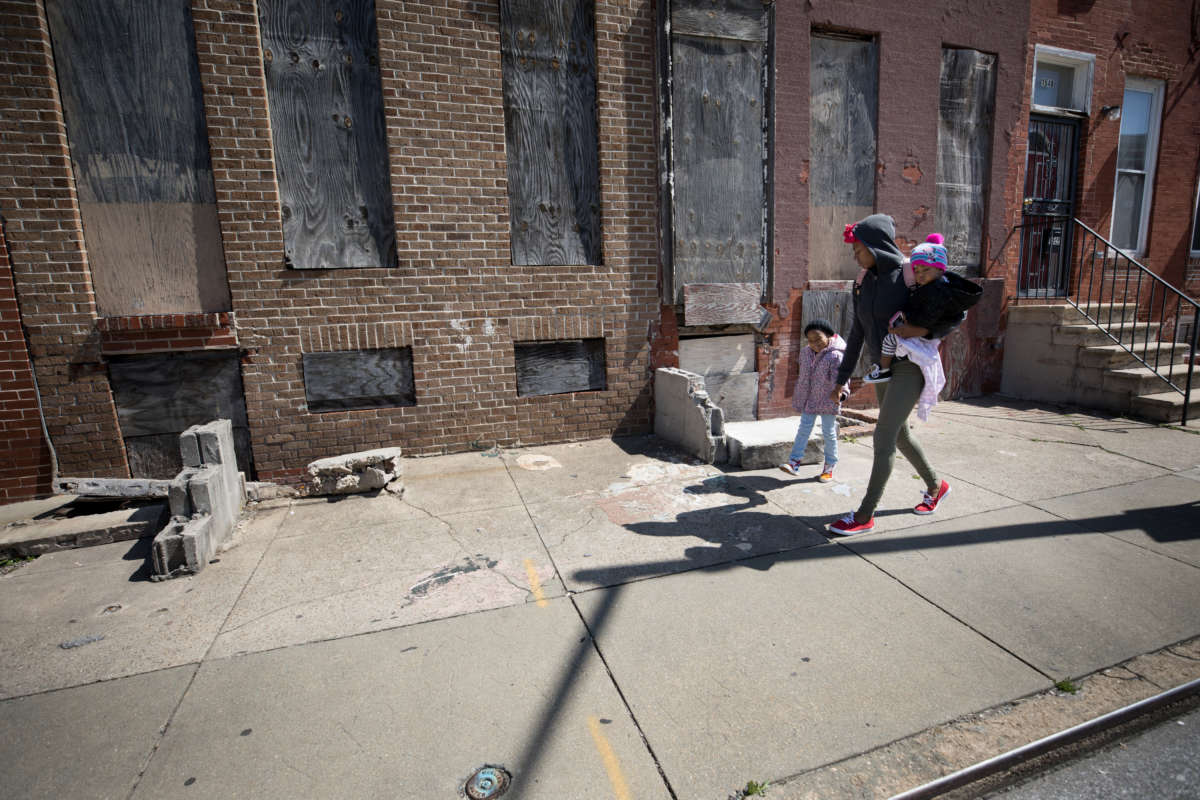We Must Address the Roots of Inequality to Keep It From Killing Us
New data from the U.S. Census Bureau confirms that the gap between the richest and poorest households in the U.S. is the largest it has been in over 50 years, and that economic power is more concentrated than ever before. Democrats and Republicans may have different interpretations of these facts, but in public health, decades of research are coming to a consensus: Inequality kills.
Over the past five years, I have worked with colleagues at the Center for Community Health Equity and the Sinai Urban Health Institute in Chicago to better understand the links between inequality and health. We have found that to fully appreciate the complexity of the problem, we need to grapple with the big picture — national data — as well as the details that only emerge when we look closely at cities and, most importantly, communities. It is at these levels that the most striking links between inequality and health can be detected.
Nationally, the latest evidence shows that life expectancy in the U.S. actually declined in the last three years to 78.9 years after decades of uninterrupted increases. Diving into the life expectancy in cities, the story deepens. At the city level, life expectancy varies from a low of 71.4 years in Gary, Indiana, to a high of 84.7 in Newton, Massachusetts — a gap of more than 13 years. These gaps are generated and maintained by the structural and social determinants of health.
The stats also revealed racial differences in life expectancy. In Chicago, there is a nine-year gap between the life expectancy for Black and white people. This gap amounts to more than 3,000 “excess deaths” – or deaths that would not have occurred if the Black mortality rate was equal to the white mortality rate — for Black people in Chicago every year. Looking at causes, Chicago’s excess deaths were generated by premature mortality among Black Americans from heart disease, cancer, stroke, diabetes and kidney disease. All of these are conditions that an equitable health care system would address.
Across the 500 largest cities in the U.S., income inequality is significantly associated with life expectancy. That is, economic inequality maps directly onto health inequality.
In our 2018 study of Chicago data, a community’s level of racial and economic segregation was strongly linked to premature mortality in that community. Current patterns of segregation are built on decades of disinvestment — what many in public health now call “structural violence,” or social and political arrangements that harm populations. The effects of this historical legacy are seen today in population health indicators.
So what is to be done?
Democratic presidential hopefuls Bernie Sanders and Elizabeth Warren say the answer is Medicare for All, which would undoubtedly provide more equitable access to the health care system. But public health research demonstrates the true root causes of illness extend beyond the health care system.
What drives population health are the social determinants of health. Lowering premature mortality in the U.S. requires something even more radical than Medicare for All; it requires concerted action to limit the concentration of wealth and power. If unchecked, rampant inequality will continue to exert a heavy toll on the population.
While pundits have waged bitter battles over the need to reform the U.S. health care system, focus on the structural root of the problem is still missing. To be sure, access to the health care system is critically important, and when someone is sick, they need a system that guarantees equitable access to treatment. But the true problem remains the social and economic drivers of health, including stagnant or declining wages, job insecurity, food insecurity and neighborhood deprivation.
Change is possible.
For instance, in Chicago, a coalition of health care institutions, residents, community-based organizations, government agencies and nonprofits have come together under the banner of “West Side United.” The coalition works to address the root causes of poor health by increasing local hiring from West Side neighborhoods, supporting business development and expanding the use of community health workers, and thus, narrow the 16-year life expectancy gap that exists between the city’s downtown Loop and West Side communities. West Side United’s work is focused on four areas: health care, neighborhood and physical environment, economic vitality and education.
Effective public policy can impact all of these issues. And good research can measure changes at the community level over time. Without this kind of data, the mirage that the economy is great because macroeconomic indicators say so will continue to prevail. Missing from that view is the heavy toll that inequality exerts on the health of the population.
Public health researchers often speak about moving from a problem focus to a solution focus. The scope of the problems is known; the task is to overcome them. Across the U.S., efforts are underway to make better use of statistics on health disparities.
Certainly health care is a major issue in this upcoming election. But until the factors contributing to who lives and who dies and at what rates are addressed, inequality will continue to be a killer.




Geen opmerkingen:
Een reactie posten